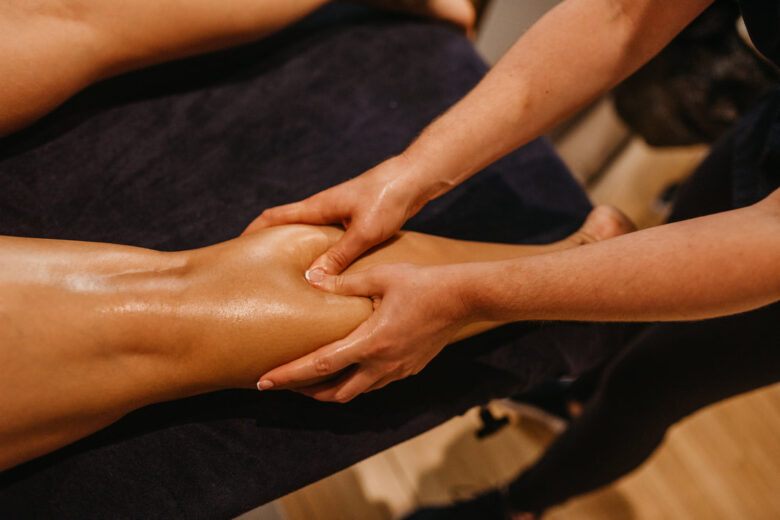Exploring career opportunities in massage therapy reveals a world full of possibilities beyond the traditional spa setting. This field is dynamic and ever-growing, offering a variety of work environments that cater to different interests and lifestyles. Whether you’re passionate about wellness, sports, or holistic healing, there’s likely a niche in massage therapy that fits your goals.
1. Day Spas and Salons
Day spas and salons are perhaps the most traditional workplaces for massage therapists. These settings offer a calm, luxurious environment where clients come to relax and rejuvenate. As a massage therapist in a day spa or salon, you’ll typically provide a range of services, from Swedish and deep tissue massages to specialized treatments like hot stone therapy.
A massage job (마사지구인) a spa or salon can be rewarding, especially if you enjoy creating a serene experience for clients. This environment often emphasizes relaxation and pampering, making it a great choice for those who want to focus on wellness and self-care.
2. Medical Clinics and Hospitals
For those interested in the therapeutic side of massage, working in a medical clinic or hospital might be the perfect fit. In these settings, therapists collaborate with healthcare professionals to provide treatment that complements medical care. This might include working with patients recovering from surgery, managing chronic pain, or dealing with injuries.
Medical massage therapy often requires additional training and certification, but it allows you to be part of a patient’s recovery process, offering a deeper sense of fulfillment and purpose.
3. Sports and Fitness Centers
Sports massage is a specialized field that focuses on helping athletes improve performance and recover from injuries. Working in a sports or fitness center, you’ll have the opportunity to work with a variety of clients, from amateur fitness enthusiasts to professional athletes.
This environment is fast-paced and physically demanding, but it’s perfect for those who are passionate about sports and physical fitness. It also allows you to develop expertise in a niche area of massage therapy, which can open up opportunities to work with sports teams or in athletic training facilities.
4. Wellness Centers and Holistic Healing Clinics

Source: bookaweb.com
Wellness centers and holistic healing clinics offer a more integrative approach to health and well-being. As a massage therapist in this setting, you’ll work alongside other holistic health professionals, such as acupuncturists, naturopaths, and nutritionists, to provide comprehensive care.
This environment is ideal for those who are interested in the mind-body connection and want to explore different modalities of healing. It also offers the chance to build strong, long-term relationships with clients who are committed to their overall health and wellness.
5. Resorts and Cruise Ships
For those who love to travel, working in a resort or on a cruise ship can turn massage therapy into an adventure. These positions often come with perks like free accommodations, meals, and the opportunity to work in beautiful, exotic locations.
While the work can be demanding, especially during peak vacation seasons, it’s a great way to see the world while doing what you love. Plus, the clientele in these settings often seeks high-end, luxurious services, which can make the work both rewarding and financially lucrative.
6. Corporate and On-Site Massage
Corporate wellness is a growing field, and many companies now offer on-site massage therapy as part of their employee wellness programs. As a corporate therapist, you’ll visit offices to provide quick, stress-relieving massages to employees, often during their breaks or lunch hours.
This role is perfect for those who prefer a more mobile and flexible work schedule. It also allows you to reach a wide range of clients, many of whom may not have the time or inclination to visit a spa but still appreciate the benefits of massage.
7. Private Practice
Starting your own private practice offers the ultimate in flexibility and independence. As a self-employed therapist, you can set your hours, choose your clients, and specialize in the types of massage that interest you most.
While building a private practice requires business savvy and the ability to market your services, it can be incredibly rewarding. You’ll have complete control over your work environment and the freedom to create a unique brand that reflects your values and expertise.
Specializations in Massage Therapy
As you gain experience in therapy, you may find that you’re drawn to a particular area of specialization. Specializing allows you to develop expertise in a niche area, which can make you more attractive to employers and clients alike. Here are some popular specializations within the field of massage therapy:
1. Sports Massage

Source:youtube.com
As mentioned earlier, sports massage focuses on helping athletes prevent and recover from injuries, improve performance, and maintain peak physical condition. This specialization often requires additional training and certification, but it offers the chance to work with sports teams, athletic trainers, and even individual athletes.
2. Prenatal and Postnatal Massage
Prenatal and postnatal massage is designed to support women during and after pregnancy. This type of massage addresses the specific needs of expectant and new mothers, such as reducing swelling, relieving pain, and promoting relaxation.
This specialization requires knowledge of pregnancy and childbirth, but it’s incredibly rewarding to help women navigate this important time in their lives.
3. Clinical Massage

Source:facebook.com
These therapists work in medical settings, providing treatment that complements traditional medical care. This might include working with patients who have chronic conditions like arthritis or fibromyalgia or helping those recovering from surgery or injury.
This specialization often requires additional training in anatomy, physiology, and medical massage techniques, but it allows you to be an integral part of a patient’s healthcare team.
4. Reflexology
Reflexology is a specialized form of massage that focuses on applying pressure to specific points on the feet, hands, or ears, which are believed to correspond to different parts of the body. Reflexology is often used to promote relaxation and balance within the body, and it can be a great addition to a therapist’s skill set.
5. Cupping and Other Alternative Techniques
Many therapists choose to specialize in alternative techniques, such as cupping, which involves placing cups on the skin to create suction. These techniques are often used to promote healing, improve circulation, and relieve muscle tension.
Specializing in alternative techniques allows you to offer unique services that set you apart from other massage therapists and attract clients who are looking for something different.
Conclusion
Exploring career opportunities in massage therapy reveals a field full of potential, whether you’re drawn to the relaxing environment of a spa, the fast-paced world of sports, or the rewarding work of helping patients in a medical setting.




